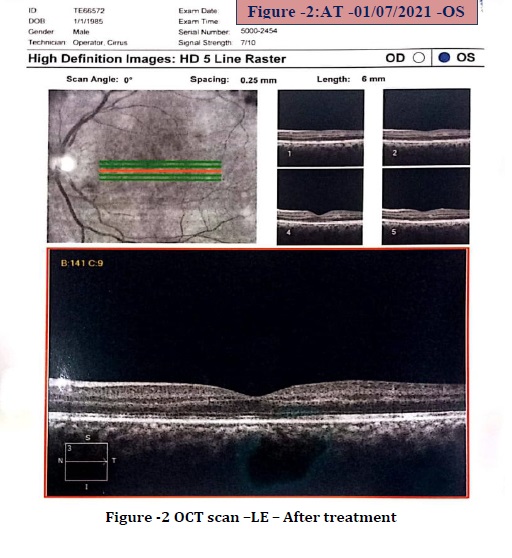Role of Ayurveda in the Management of Central Retinal Vein Occlusion- A Case Report
DOI:
https://doi.org/10.47070/ayushdhara.v8i6.828Keywords:
CRVO, Urdwagaraktapitta, pratimargaharana, Raktavaha srotas,Rasa dhatu, Rakta prasadanamAbstract
Retinal Venous Occlusion (RVO) is one among the most common retinal vascular diseases. It is of two types, central retinal venous occlusion and branch retinal venous occlusion. In the management of CRVO various modulators of the hemorrheological factors have been tried such as anticoagulants, thrombolytic and hemodilution but none of them is of proven benefit so far. In Ayurveda this condition is managed as Urdhwagaraktapitta (Bleeding through upper orifices) causing Drishtigatavikara (visual impairment) and emergency managements mainly include Rakta-pittasamana Vataanulomana and Raktaprasadana. Illustrating a case of 36-year-old male patient presented with sudden onset of blurry vision of left eye for 4 days. Further investigations confirmed the diagnosis of non‐ischemic CRVO with cystoid macular oedema and serous foveal detachment of left eye. This ocular emergency is then managed with Virechanam (purgation) in daily dose and internal medicines. After 7 days of treatment patient got marked relief and vision improved from 6/60 to 6/9 for left eye. The assessment was done using Visual Acuity, Fundus examination, and Optical Coherence Tomography (OCT), which showed marked reduction in macular oedema also. This case encapsulating the role of Ayurveda treatments in management and restoration of visual status in serious illness like CRVO.
Downloads

Downloads
Published
Issue
Section
License
Copyright (c) 2022 AYUSHDHARA

This work is licensed under a Creative Commons Attribution-NonCommercial-ShareAlike 4.0 International License.


